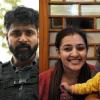The Nobel Prize Committee has on Tuesday announced the winners of the Nobel Prize in Physics amidst a global expectation. The development has come a day after the announcement about the winner of Nobel Prize in Medicine was made by the institute. As per the current announcement, three scientists have been conferred with Nobel Prize in Physics for their work on electrons.
The Nobel Prize in Physics will this year be shared by three scientists - Pierre Agostini, Ferenc Krausz, and Anne L'Huillier. While Agostini and Huillier are French physicists, Ferenc Krausz belongs to Hungary. The winners of Nobel Prize in Physics will be decided by the Royal Swedish Academy of Sciences. Sharing the announcement of the winners on social media, the committee said, "The Royal Swedish Academy of Sciences has decided to award the 2023 Nobel Prize in Physics to Pierre Agostini, Ferenc Krausz and Anne L’Huillier “for experimental methods that generate attosecond pulses of light for the study of electron dynamics in matter.”
The winners will share prize money of 10 million Swedish krona, which is about $1 million. The work of these three Nobel Prize recipients had demonstrated a way to create extremely short pulses of light that can be used to measure the rapid processes in which electrons move or change energy. They found that these almost unimaginably short pulses could be used to capture images of processes occurring inside tiny atoms and molecules.
Electrons have a trait that they move so quickly that their movements can't be followed precisely. Now, the scientific world hails these three scientists for creating flashes of light that are short enough to take snapshots of electrons' extremely rapid movements. The Nobel Prize Committee has commended the laureates for giving new tools for humanity for exploring the world of electrons inside atoms and molecules.
CNN has quoted University of Chicago professor Bob Rosner saying, "They were able to, in a sense, provide an illumination tool that allows us to watch the assembly of molecules, how things come together to make a molecule." Rosner further said, "These movements happen so quickly that normally we have no idea how they actually occur or what the sequence of events is." He added that through the works of these three Nobel Prize recipients, the scientists can now observe how these movements happen.
Professor Pierre Agostini is now based at Ohio State University in the United States and Professor Ferenc Krausz is at Max Planck Institute of Quantum Optics in Germany, while Professor Anne L'Huillier is at Lund University, Sweden. On Monday, Katalin Kariko and Drew Weissman were jointly awarded the Nobel Prize for Medicine for their work on making mRNA molecule discoveries that was instrumental in producing Covid-19 vaccines.
Dubbed as the Nobel week, the Nobel Prizes across various fields willl be announced in the first week of October, from October 2 to 9. While the Nobel Prizes for Medicine and Physics have already been announced, the following days would witness the announcements of the winners in the fields of chemistry, literature, peace, and economics.
BREAKING NEWS
— The Nobel Prize (@NobelPrize) October 3, 2023
The Royal Swedish Academy of Sciences has decided to award the 2023 #NobelPrize in Physics to Pierre Agostini, Ferenc Krausz and Anne L’Huillier “for experimental methods that generate attosecond pulses of light for the study of electron dynamics in matter.” pic.twitter.com/6sPjl1FFzv









Comments